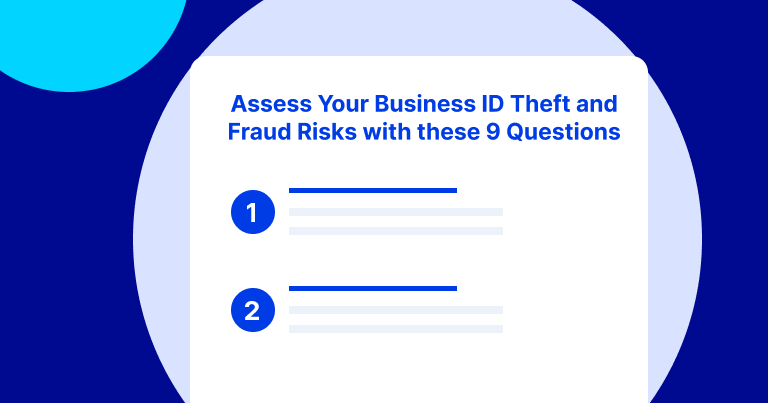The pandemic inspired a wave of digital innovation as retailers, manufacturers and marketplaces adopted digital tools to make it easier for B2B buyers to pay online. As a result, most B2B businesses—98% of them—have been affected by financial losses due to successful fraud attacks last year. And business identity is a growing problem: cybercriminals’ fraud attack volumes increased by more than 150% in 2021 alone.1
Risk and Resilience: The Business Identity Theft Report, a PYMNTS and TreviPay Collaboration, examines how fraud inhibits B2B business growth and how businesses are searching for innovative ways to protect themselves from revenue loss as they scale. The report is based on a survey of 150 executives at B2B companies generating $10 million to $1 billion in annual revenues and was conducted between Nov. 3, 2021, and Nov. 26, 2021.
The risk of business identity theft can stunt growth
In addition to being a near-universal issue, fraud attacks cause significant financial harm. Our research reveals that the average impact of fraud equals 3.5% of a B2B business’s annual revenue, with many of them suffering even greater losses.
The recent proliferation of fraud has resulted in tangible negative outcomes for many businesses:
- Many companies see the prospect of expansion as a false choice: An aggressive growth strategy that generates new customers could create more exposure to fraud attempts, potentially offsetting any additional revenue. In fact, more than half of businesses surveyed are avoiding growth due to a fear of fraud and a belief that their existing anti-fraud measures would be insufficient.
- Other businesses fail to grow because their anti-fraud approaches flag legitimate business contacts or transactions as fraudulent—“false flags”—thereby preventing them from acquiring a legitimate customer.
Key findings: the best business identity theft solutions are automated
It’s no surprise to hear that automated fraud solutions work better than manual processes. But with an array of options, which are more effective? Here’s an excerpt, including key data points, from the Executive Summary of Risk and Resilience: The Business Identity Theft Report.
- Nearly all retail and manufacturing marketplaces and businesses have lost an average of 3.5% of their annual sales from selling to fraudulent businesses or mistakenly flagging legitimate businesses as fraudulent.
Our survey found that 98% of retailers, manufacturers and marketplaces have been victims of fraud or have missed opportunities to transact with firms that were later revealed to be legitimate. While retailers, manufacturers and marketplaces that experienced fraud lost an average of 3.5% of their annual sales revenues, small businesses lost as much as 5% due to fraud-related concerns, such as sales to fraudulent businesses. Organizations from these three sectors that implemented proactive and automated anti-fraud solutions lost less revenue (2%) to fraud-related occurrences, whereas those that reacted to instances of fraud using reactive and manual solutions lost 4.5% of their annual revenues.
- Identity verification is one of the top three challenges facing retailers, manufacturers and marketplaces.
Half of these firms are actively addressing challenges related to fraud prevention, with the majority using payment card verification as a fraud prevention method. Approximately one-fifth of businesses see identity verification methods as equally important to protecting their organizations from fraud. Nearly half of executives say verifying the identities of new business customers is a challenge that organizations have had to address and 16% consider it their most important challenge.
- More than half of retailers and nearly half of manufacturing firms say their inability to flag fraudulent businesses has constrained their growth.
Organizations using manual and reactive anti-fraud methods experienced greater negative impacts on their growth due to fraud than those using proactive and automated solutions. Organizations that wait until evidence of fraud emerges or use manual solutions may naturally see greater revenue loss due to human error or slow and inefficient identity verification or vetting procedures.
- Our research found that 68% of marketplaces and organizations in the retail and manufacturing sectors are not very satisfied with the systems they use to detect fraudulent businesses.
Seventy-one percent of organizations plan to implement new digital solutions to prevent fraud, and 49% state that finding a better digital solution for fraud prevention is their primary fraud prevention plan. Those that have reported success in implementing automated, digital anti-fraud solutions show the highest levels of satisfaction with their current anti-fraud strategies.
For a deep dive into business identity theft solutions—which work and which don’t—and other insights from B2B executives, request your copy of Risk and Resilience: The Business Identity Theft Report now.
And if you’d like to learn more about TreviPay’s proven fraud solutions, start a conversation now.
1Author unknown. Global Cybersecurity Outlook 2022. The World Economic Forum. 2022. https://www.weforum.org/reports/global-cybersecurity-outlook-2022. Accessed January 2022.






